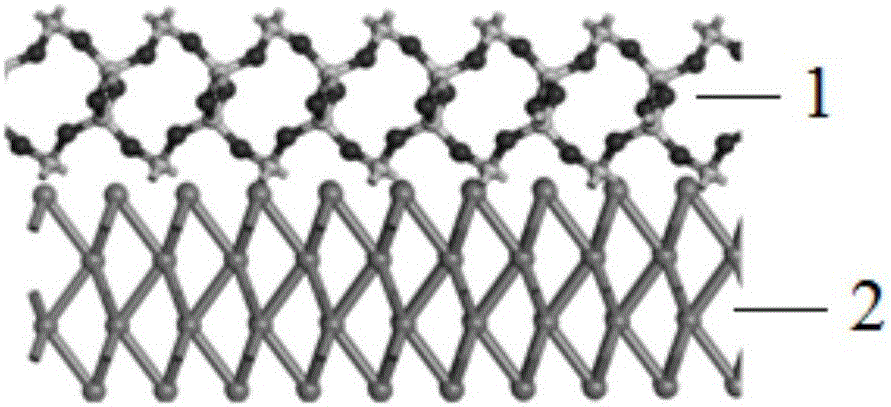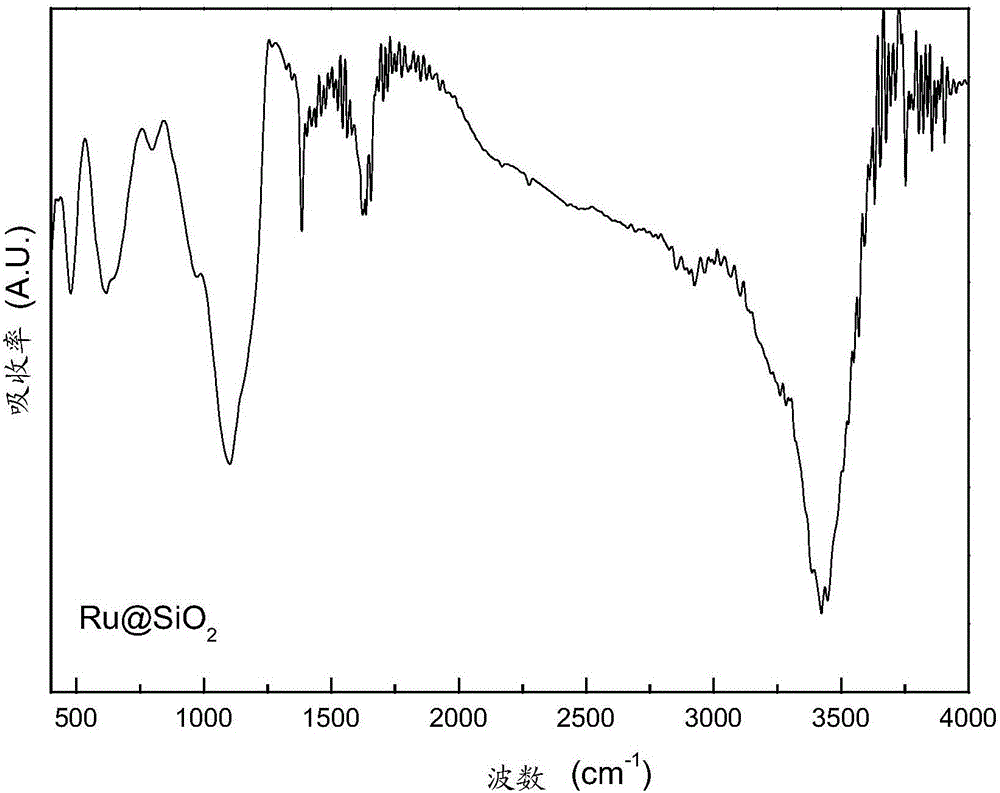Ru-based catalyst for preparing cyclohexene through partial hydrogenation of benzene and modification method of Ru-based catalyst
A ruthenium-based catalyst and cyclohexene technology, which is applied in the fields of chemical engineering and chemical catalysts, can solve the problems of high-yield data that are difficult to obtain repeated verification
- Summary
- Abstract
- Description
- Claims
- Application Information
AI Technical Summary
Problems solved by technology
Method used
Image
Examples
Embodiment 1
[0036] RuSiO 2 Preparation of core-shell catalysts
[0037] A certain amount of RuCl 3 ·3H 2 O was dissolved in 60ml of distilled water, and 15% NaOH solution was added under vigorous stirring, and left to stand for suction filtration after fully reacting. The resulting black solid was washed 3 times with distilled water and 3 times with 5% NaOH solution, then dispersed in 5% NaOH solution and transferred to an autoclave. Ru particles were obtained by raising the temperature to 150° C. for 3 h under a hydrogen partial pressure of 5 MPa and a stirring rate of 800 rpm. In a 250ml eggplant-shaped bottle, add 40ml of absolute ethanol, 5ml of distilled water, a certain amount of tetraethyl orthosilicate and 200ul of ammonia water, mix well and then add Ru particles. Magnetically stirred for 2 h, then washed twice with ethanol to obtain RuSiO 2 catalyst. The thickness of the surface silicon layer was adjusted by changing the amount of tetraethyl orthosilicate.
[0038] RuSiO ...
Embodiment 2
[0045] RuZnSiO 2 Preparation of core-shell catalysts
[0046] Weigh 1.66g of RuCl 3 ·3H 2 O was added to 150ml distilled water to prepare a solution. Weigh 10.08g of KOH and dissolve it in 100ml of deionized water, transfer it into a three-neck flask placed in a constant temperature water bath, and start stirring. The temperature of the constant temperature water bath was raised to 80°C, and the prepared RuCl 3 The solution was added to a three-necked flask. After the addition, stir at a constant temperature of 80°C for 1 hour, then stop stirring, continue to maintain a constant temperature of 80°C for about 1 hour, and then cool naturally. Wash the sediment with distilled water until neutral, along with 50ml benzene, 100ml distilled water, and 20g of ZnSO 4 ·7H 2 O was added to the autoclave. Then the RuZn alloy particles were obtained by reduction at 180°C, hydrogen partial pressure 5.0MPa and stirring rate 1000rpm for 8h. In a 250ml eggplant-shaped bottle, add 40ml...
Embodiment 3
[0050] RuBSiO 2 Preparation of core-shell catalysts
[0051] 50mL0.05mol / L of RuCl 3 With 25mL0.5mol / L NaBH 4 Restore drop by drop. Continue stirring for 10 min after the reduction is completed. RuB particles were obtained after standing, filtering, and washing with distilled water until neutral. In a 250ml eggplant-shaped bottle, add 40ml of absolute ethanol, 5ml of distilled water, a certain amount of ethyl orthosilicate and 200ul of ammonia water, mix well and add RuB particles. Magnetically stirred for 2 h, then washed twice with ethanol to obtain RuSiO 2 catalyst. The thickness of the surface silicon layer was adjusted by changing the amount of tetraethyl orthosilicate. According to the TEM results, RuBSiO 2 SiO on the surface of core-shell catalysts 2 The thickness is 1.0 nm.
[0052] RuBSiO 2 Catalyst Hydrogenation Characterization
[0053] Take 1gRuBSiO 2 Or RuB catalyst with equivalent active component quality, 17.25gZnSO 4 ·7H 2 O and 100ml of water we...
PUM
| Property | Measurement | Unit |
|---|---|---|
| Thickness | aaaaa | aaaaa |
| Thickness | aaaaa | aaaaa |
| Thickness | aaaaa | aaaaa |
Abstract
Description
Claims
Application Information
 Login to View More
Login to View More - R&D
- Intellectual Property
- Life Sciences
- Materials
- Tech Scout
- Unparalleled Data Quality
- Higher Quality Content
- 60% Fewer Hallucinations
Browse by: Latest US Patents, China's latest patents, Technical Efficacy Thesaurus, Application Domain, Technology Topic, Popular Technical Reports.
© 2025 PatSnap. All rights reserved.Legal|Privacy policy|Modern Slavery Act Transparency Statement|Sitemap|About US| Contact US: help@patsnap.com



